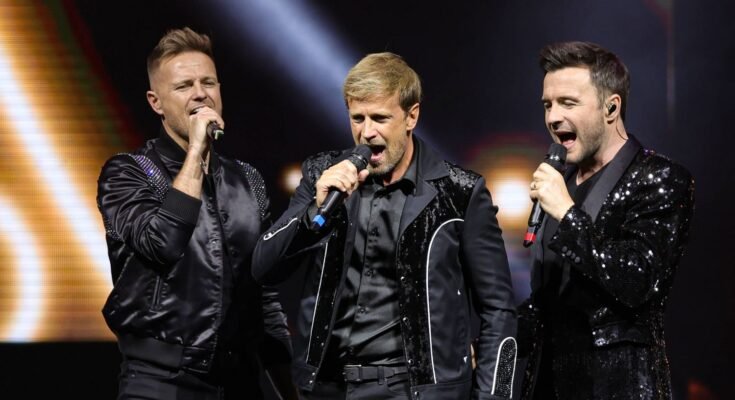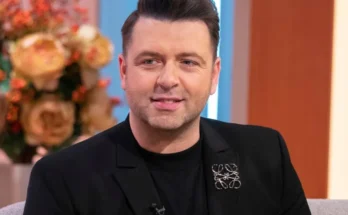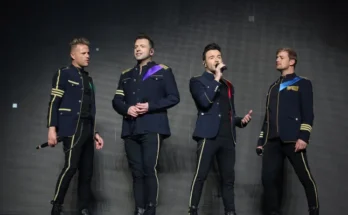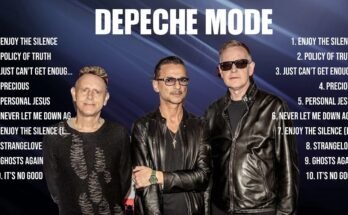In June 2025, we mark a major milestone in pop music history — the 21st anniversary of Westlife’s unforgettable cover of “Mandy”. Originally recorded by Barry Manilow in 1974, “Mandy” has long been a beloved ballad. But in 2003, the Irish boyband Westlife brought a whole new generation to its emotional power, releasing their version as the lead single from their fourth studio album, Turnaround.
And what a release it was.
Upon its debut, “Mandy” rocketed to the top of the UK Singles Chart, earning Westlife their 12th Number 1 single — a remarkable feat that placed them among the elite ranks of British chart-toppers. The song’s success wasn’t fleeting, either: it spent an impressive 12 weeks on the charts, proving not only the enduring appeal of the original but the potent magic of Westlife’s interpretation.
A New Era for a Classic Song
When Westlife chose “Mandy” for their Turnaround album, it wasn’t without risk. Barry Manilow’s version is iconic, drenched in sentimentality and remembered for its sweeping piano melodies and heartfelt delivery. But Westlife, known for their soaring harmonies and rich vocal arrangements, took on the challenge with reverence and ambition.
Their version, produced by Steve Mac (who also produced many of the group’s hits), introduced a fuller orchestral backdrop, a dramatic build-up, and the signature Westlife crescendo that fans had come to love. With lead vocals primarily carried by Shane Filan and Mark Feehily, the rendition maintained the emotional intensity of the original while updating it with a fresh, early-2000s pop sensibility.
This wasn’t just a cover; it was a reimagining. And it worked.
A Video That Told a Story
The success of “Mandy” wasn’t just audio — it was visual too. The official music video, now boasting over 42 million views on YouTube, played a significant role in capturing the hearts of fans. Featuring a moody, rain-soaked backdrop and a romantic storyline laced with longing and regret, the video struck a perfect chord with Westlife’s audience. The visual aesthetic echoed the melancholic beauty of the song, reinforcing its narrative of lost love and emotional yearning.
As the band members walked through shadowed streets and empty spaces, each verse felt deeply personal. It was a masterclass in emotional storytelling — minimal but effective, just like the best of Westlife’s ballads.
A Fan Favorite for the Ages
Even two decades later, “Mandy” remains a cornerstone in Westlife’s discography. In live concerts, it consistently draws massive cheers. Fans often sing along word for word, proving its lasting emotional impact. It has become one of those rare songs that transcends eras, appealing to fans who grew up with the group as well as those discovering their music for the first time.
It also stands as a shining example of Westlife’s talent for revitalizing classic songs. While their original tracks like “Flying Without Wings” and “My Love” define their legacy, covers like “Mandy” demonstrate their musical range and respectful artistry. They didn’t just copy Manilow — they honored him while making the song unmistakably their own.
21 Years Later: Why “Mandy” Still Matters
Looking back from 2025, “Mandy” represents more than just another hit single. It captures a specific moment in pop history — a time when boybands ruled the airwaves, when emotional ballads filled stadiums, and when Westlife stood at the forefront of a genre they helped define.
In an era when musical trends shift rapidly, the fact that “Mandy” continues to resonate is no small achievement. It speaks to the timelessness of great songwriting, the power of emotional delivery, and the enduring bond between Westlife and their fans.
As we celebrate this 21-year milestone, it’s clear that “Mandy” is more than just a song in Westlife’s catalog — it’s a symbol of their artistry, their respect for music history, and their ability to connect deeply with audiences around the world.
So here’s to “Mandy” — and to 21 years of love, longing, and harmonies that still give us goosebumps.



